Cleveland Irish: Pump, Pump, Pull Away
- John O'Brien
- May 7, 2020
- Edited 3 months ago
Table of Contents
Cleveland Irish: Pump, Pump, Pull Away
by Francis McGarry
Historians of Irish American history have the ability to research and discuss topics, such as the health and medical care of an immigrant group that survived the famine, then completed the voyage across the Atlantic in insalubrious ships, and then predominately settled in neighborhoods that were overpopulated and grotty. Some of these historians consciously or unconsciously embed their scholarship with cultural stereotypes and expatiated generalizations.
The Downpatrick Recorder noted in the Spring of 1849 that, “We observe, with regret, that much of the wealth and comfort of this hitherto prosperous county (Down) is being transported to the shores of America, and other parts of the Globe. Within the last few weeks, upwards of two thousand individuals have left the districts of this county, for emigration to America, and these, we can safely affirm, did not leave the country with empty purses.”
The Diaspora in the Historical Record
It is this component of the Irish Diaspora that is underrepresented in the historical record, regardless of its proportional relationship to the majority. That is the paradigm of William Gleason and his 1896 essay on the Irish in Cleveland:
Charles C. Rogers accumulated a fortune as an ale brewer, his establishment being located at the corner of Seneca and Canal streets. While a member of the City Council from the old first ward, he was mainly instrumental in providing the central market and erecting the market house. It was his pet and hobby till he died. Through Charley Rogers’ foresight, our city has been enriched by hundreds of thousands of dollars. The plentiful and at all times full market fund has been a convenient source to draw upon for emergencies and depleted funds.
The Gibbons family have all turned out to be substantial businessmen. James established the Fulton market; Col. John W., ex-director of police and now secretary of the Springsteen Medicine Co., and Anthony W., secretary and treasurer of the Union Elevator Co., have been prominent among our merchants.
The first brass foundry in this section of the country was established by the Farnan family. The third generation of the family is still conducting a lucrative business in the same line at the old stand on Center Street.
Patrick Farley was a mail contractor and land owner, who acquired a good name and left a competency to his family. He was the father of ex-Mayor John H. Farley.
John and William Given were well-known contractors and builders. William is yet with us, blithe and young in action, full of energy and good nature, and still ready to build a block at fair figures.
Capt. Michael C. Frawley sailed the oceans and the lakes for nearly fifty years and had a fine reputation as a skillful navigator. He left an ample fortune as a result of his prudence and energy. Captains George P. McKay, Edward Mooney, Edward Kelley, Patrick Boylan, and John McNeff have well-earned reputations as safe and competent sailors.
The West Side McMahons, John P., ex-assistant chief of the fire department, now a harness manufacturer, and his brother, Constable “Christie,” are old Cleveland boys who sprung from good Irish stock. They are reckoned among our active and well-liked citizens.
“Old Father Conlan” and “Young Father Conlan” were the loved pastors of St. Patrick’s Church on the West Side for many years. Their good works and memories remain fresh and green among the people of their parish.
James and Robert Cahill were competent railroad engineers.
Professors Fitzgerald and Wakefield were well-known classical scholars and able schoolmasters. Messrs. Curry, Foley, and James Hannan taught the “three R’s” also geography and spelling, in the little one-room schoolhouse on the commons in the rear of St. John’s Cathedral. What an ample playground we had!
Superior Street practically ended at Erie Street; beyond that it was only a lane. Except the woods, vacant ground extended from the rear of George May’s home, southeast corner of Superior and Erie streets, north to Oregon street, south to Chestnut Street, east to Buffalo. We played football in those days, not carrying the ball under the arm; not the imported English, rough and tumble fighting, bone breaking, slugging, gouging, killing game of the colleges today; but the manly, lively, fast running, kicking game.
We also played “cricket,” “shinney,” “pump, pump, pull away,” “snap the whip,” “one and two old cat,” and “sock ball,” the latter evolving into the great American game of baseball. Our hunting grounds were on “Snipe island,” located on the territory now bounded by Muirson, Chestnut and St. Clair streets and Case avenue; on “University heights,” now the South side, on “Stone’s pasture,” now the lumber district, and on the old river bed. There was fine duck shooting in the latter place.
Coasting down the hillsides of Superior, St. Clair, Water, South Water, Champlain, Michigan, Seneca, Columbus and Detroit streets was glorious winter sport. We had jolly times and excellent teachers in the days of the little wooden schoolhouse.
Squire Duffy was one of the first justices of the peace. He was a conspicuous figure, being about six feet four inches tall, slimly built, had a long, stately stride and was quite dignified in his appearance. He invariably wore a “stovepipe” hat and a flowing Daniel O’Connell cloak and cape. He had a happy faculty for settling all petty family and neighborhood quarrels. The long squire was reputed to be quite well off.
Doctors Strong, Bailey, Story, Keegan and Thomas Hannan were numbered among the most skillful physicians and surgeons. They went through two cholera epidemics and smallpox sieges, and largely aided in allaying the ravages of those terrible ailments. Fever and ague were the prevailing troubles among the early settlers, the city abounding in marshes and swamps.
The old doctors had implicit faith in whisky and quinine as a “shake preventor.” Under the circumstances, quite a number of the sick did not object to the “shaking.” The main regret they had was that the “shakes” came on only every other day, and that the proportions of quinine were too large.
Aunt Irene taught us how to play pump, pump, pull away. Some kids today might compare it to sharks and minnows. She learned us well despite not being one of those fancy college-educated doctors like Keegan and Hannan. Aunt Irene did share their same faith in whiskey. That was the time when universal health care was available at the local Irish tavern as long as did not have an empty purse.
*Francis McGarry holds undergraduate degrees from Indiana University in Anthropology, Education and History and a Masters in Social Science from the University of Chicago. He is an assistant principal and history teacher. Francis is a past president of the Irish American Club East Side. He is the founder and past president of the Bluestone Division of the Ancient Order of Hibernians.




